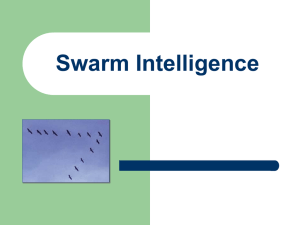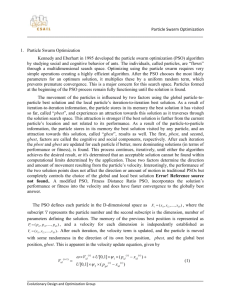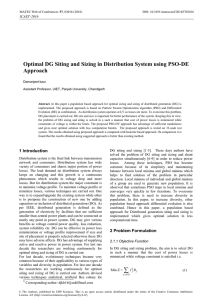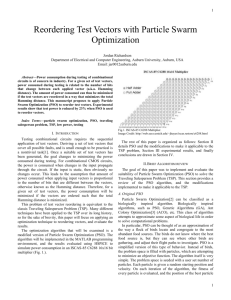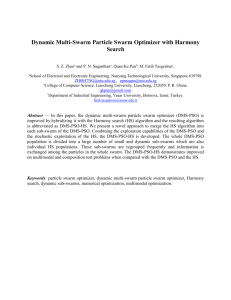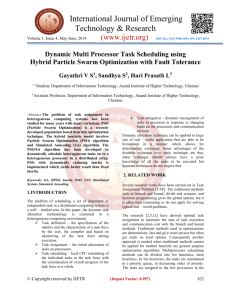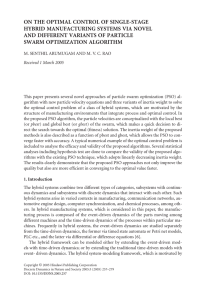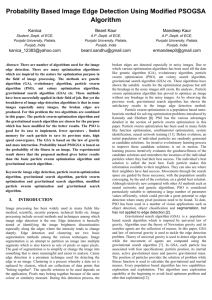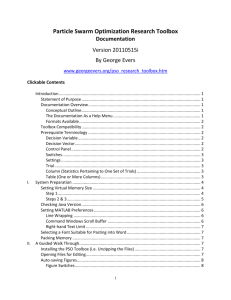PSO
advertisement
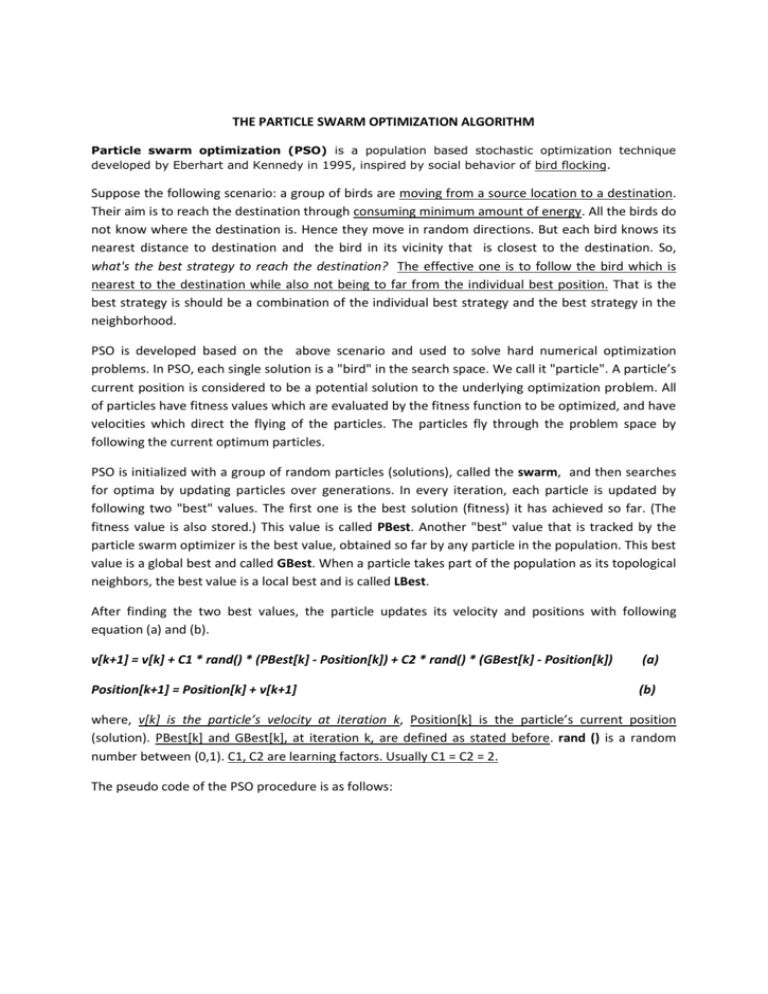
THE PARTICLE SWARM OPTIMIZATION ALGORITHM Particle swarm optimization (PSO) is a population based stochastic optimization technique developed by Eberhart and Kennedy in 1995, inspired by social behavior of bird flocking. Suppose the following scenario: a group of birds are moving from a source location to a destination. Their aim is to reach the destination through consuming minimum amount of energy. All the birds do not know where the destination is. Hence they move in random directions. But each bird knows its nearest distance to destination and the bird in its vicinity that is closest to the destination. So, what's the best strategy to reach the destination? The effective one is to follow the bird which is nearest to the destination while also not being to far from the individual best position. That is the best strategy is should be a combination of the individual best strategy and the best strategy in the neighborhood. PSO is developed based on the above scenario and used to solve hard numerical optimization problems. In PSO, each single solution is a "bird" in the search space. We call it "particle". A particle’s current position is considered to be a potential solution to the underlying optimization problem. All of particles have fitness values which are evaluated by the fitness function to be optimized, and have velocities which direct the flying of the particles. The particles fly through the problem space by following the current optimum particles. PSO is initialized with a group of random particles (solutions), called the swarm, and then searches for optima by updating particles over generations. In every iteration, each particle is updated by following two "best" values. The first one is the best solution (fitness) it has achieved so far. (The fitness value is also stored.) This value is called PBest. Another "best" value that is tracked by the particle swarm optimizer is the best value, obtained so far by any particle in the population. This best value is a global best and called GBest. When a particle takes part of the population as its topological neighbors, the best value is a local best and is called LBest. After finding the two best values, the particle updates its velocity and positions with following equation (a) and (b). v[k+1] = v[k] + C1 * rand() * (PBest[k] - Position[k]) + C2 * rand() * (GBest[k] - Position[k]) (a) Position[k+1] = Position[k] + v[k+1] (b) where, v[k] is the particle’s velocity at iteration k, Position[k] is the particle’s current position (solution). PBest[k] and GBest[k], at iteration k, are defined as stated before. rand () is a random number between (0,1). C1, C2 are learning factors. Usually C1 = C2 = 2. The pseudo code of the PSO procedure is as follows: For each particle Initialize particle END Do For each particle Calculate fitness value If the fitness value is better than the personal best fitness value (PBest) in history Set current value as the new PBest End Choose the particle with the best fitness value of all the particles as the GBest For each particle Calculate particle velocity according equation (a) Update particle position according equation (b) End While ((Maximum_Iterations or Minimum_Error criteria) NOT Attained) Usually, for the purpose stability of the algorithm, particles' velocities on each dimension are clamped to a maximum velocity Vmax. If the sum of accelerations would cause the velocity on that dimension to exceed Vmax, which is a parameter specified by the user, then the velocity on that dimension is limited to Vmax. A Flowchart description of the PSO algorithm is presented below.







